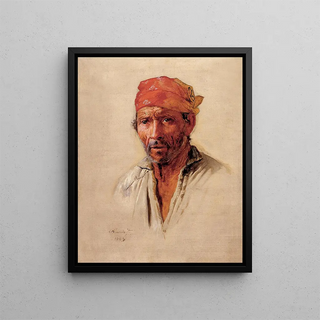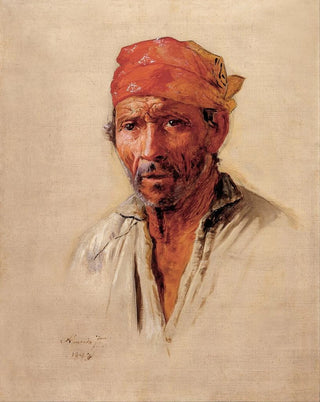Art print | Study of Caipira's head - Almeida Júnior


View from behind

Frame (optional)
Reproduction of "Study of the Head of Caipira" by Almeida Júnior – Captivating Introduction
The artwork "Study of the Head of Caipira" by Almeida Júnior embodies the quintessence of 19th-century Brazilian artistic sensitivity. This study, both intimate and powerful, immerses us in Brazil's rural universe, revealing the depth of human emotions. By fixing our gaze on this face full of character, we are immediately transported to a world where nature and man coexist in harmony. The artist succeeds in capturing the soul of a typical character, the Caipira, thus representing a culture rich in traditions and stories. The art print of this work allows us to rediscover a often overlooked artistic heritage, while inviting us to reflect on our own relationship with identity and authenticity.
Style and uniqueness of the work
Almeida Júnior stands out for his mastery of portraiture, and "Study of the Head of Caipira" is a shining example. The artist's technique, characterized by delicate brushstrokes and meticulous attention to detail, brings each facial feature to life. Light plays a crucial role in this piece, emphasizing shadows and reliefs, creating an almost tangible atmosphere. The expression of the Caipira, both melancholic and resilient, testifies to a deep humanity, inviting the viewer to question the life stories hidden behind this face. This style, both realistic and imbued with poetry, makes this study a true masterpiece, where the simplicity of the subject blends with great emotional complexity.
The artist and his influence
Almeida Júnior, an emblematic figure of Brazilian art, managed to mark his era with his innovative approach and commitment to representing popular culture. Born in 1850, he grew up in a context where academic art dominated, but quickly understood the importance of giving a voice to rural classes often ignored. Through his works, he established a dialogue between tradition and modernity, influencing many contemporary artists. His work on the Caipira, a symbol of the Brazilian soul, paved the way for an exploration

Matte finish

View from behind

Frame (optional)
Reproduction of "Study of the Head of Caipira" by Almeida Júnior – Captivating Introduction
The artwork "Study of the Head of Caipira" by Almeida Júnior embodies the quintessence of 19th-century Brazilian artistic sensitivity. This study, both intimate and powerful, immerses us in Brazil's rural universe, revealing the depth of human emotions. By fixing our gaze on this face full of character, we are immediately transported to a world where nature and man coexist in harmony. The artist succeeds in capturing the soul of a typical character, the Caipira, thus representing a culture rich in traditions and stories. The art print of this work allows us to rediscover a often overlooked artistic heritage, while inviting us to reflect on our own relationship with identity and authenticity.
Style and uniqueness of the work
Almeida Júnior stands out for his mastery of portraiture, and "Study of the Head of Caipira" is a shining example. The artist's technique, characterized by delicate brushstrokes and meticulous attention to detail, brings each facial feature to life. Light plays a crucial role in this piece, emphasizing shadows and reliefs, creating an almost tangible atmosphere. The expression of the Caipira, both melancholic and resilient, testifies to a deep humanity, inviting the viewer to question the life stories hidden behind this face. This style, both realistic and imbued with poetry, makes this study a true masterpiece, where the simplicity of the subject blends with great emotional complexity.
The artist and his influence
Almeida Júnior, an emblematic figure of Brazilian art, managed to mark his era with his innovative approach and commitment to representing popular culture. Born in 1850, he grew up in a context where academic art dominated, but quickly understood the importance of giving a voice to rural classes often ignored. Through his works, he established a dialogue between tradition and modernity, influencing many contemporary artists. His work on the Caipira, a symbol of the Brazilian soul, paved the way for an exploration






